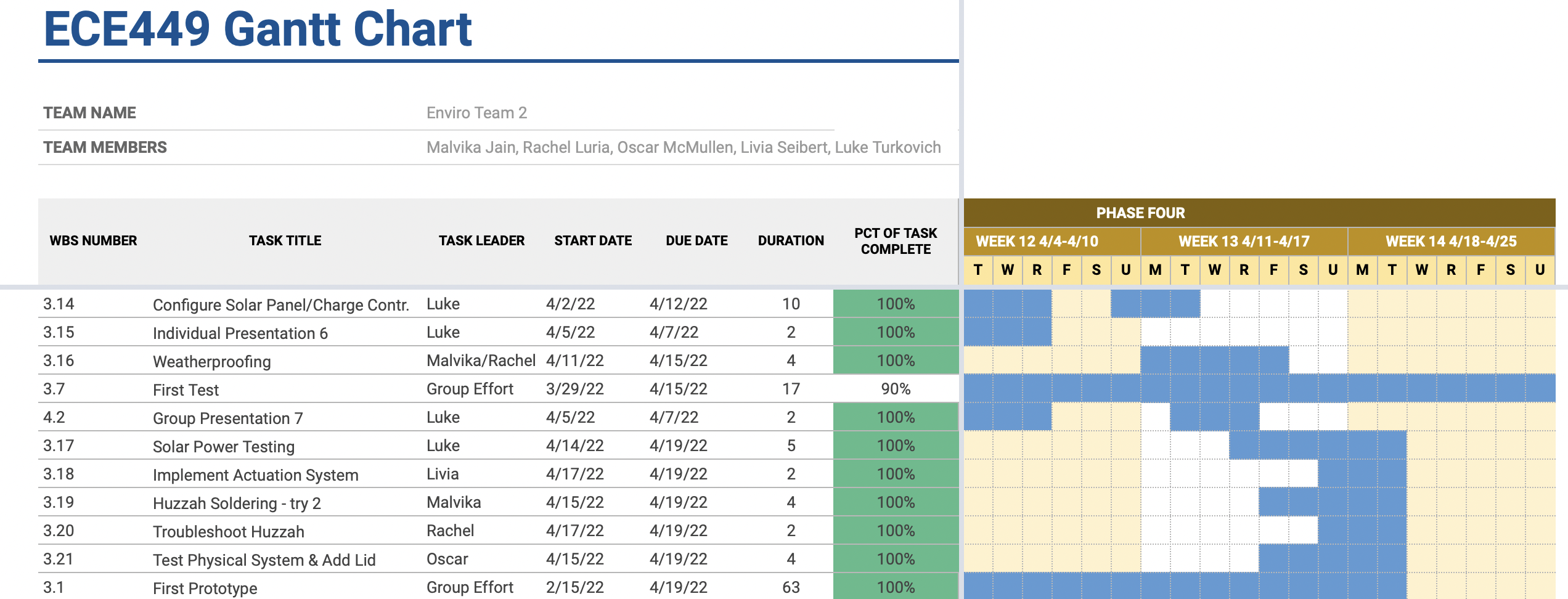Smart Greenhouse

sensor system to remotely monitor plant health
Background : Organic farming is the most environmentally sustainable farming technique, however the cost and effort of maintaining an organic farm is far greater than using chemicals. In order to increase crop yields, damage due to environmental conditions must be limited. Monitoring and controlling the growing environment of plants can significantly increase the growing season, crop yields, and transplant viability.
Problem Statement: The goal of this project is to make a system that will monitor and protect small plants from various environmental factors. The environmental factors that need to be considered are temperature, water, sunlight, frost, and small animals. The system will be designed to be easy and effective to be used with organic farming techniques.
Importance of the Problem, Need for Solution, Competitive Advantage of Solution: The weather-protecting system will benefit organic farmers by extending their seasons of crop growth which in turn produces a higher crop yield and more profit for the farmers. Through being notified of extreme weather conditions, farmers will be able to quickly adapt to the conditions to protect their crops and increase their marketable crop yield. Current solutions, such as a greenhouse, are large and expensive for small-scale organic farmers. While small greenhouses exist, they are not very durable and cost hundreds of dollars. Additionally, current monitoring solutions are expensive and do not come pre-integrated with the greenhouse structure. So, a cheaper, durable solution with sensing capability is needed.
Potential Users: Potential users of the solution are organic farmers with wireless connectivity in their fields. Our solution will be optimized for a humid subtropical climate similar to that of North Carolina (USDA hardiness zone 7b for Durham-Raleigh area).
Design Citeria:
design constraints: volume and format protected by system, system controls, solar powered, wireless report system, and usable in organic production
design objectives: portability, weatherproof, and ease of use


Wireless Connectivity: Using the sample WiFi code given by the Arduino IDE, we were able to get the Huzzah to connect to WiFi right away. Once the WiFi connection is open, the Huzzah can connect to Firebase and store sensor data on the internet.
Power: The system is powered using a Mighty Max 12V Lead-Acid battery. The battery is powered by a 5W solar panel and connected to a 10A solar charge controller regulator. The charge controller has a 5V/1A output that connects to the Huzzah using a USB to microUSB cable.
Sensor System: First, we built the circuit for the sensor system on a breadboard. The first sensor we tried to set up was the soil moisture sensor. This was fairly simple, as we only had to connect the sensor to power and ground, and then to connect the analog out pin to an input pin on the Huzzah. Next, we set up the temperature sensor. Once this was added, the temperature readings were correct and only needed to be converted to Fahrenheit to be used. Lastly, we added a photoresistor to the circuit to measure light. Similarly to the soil moisture sensor, we converted the analog reading to a percentage as well.
Once the sensors were working on the breadboard, we had to transfer the circuit over to a proto board to make it more permanent for the final design.

Communication System: The website began as a static HTML and CSS page to show a sense of the overall layout. Then, we added in JavaScript to get the website to connect to Firebase. After the initial connection, the JavaScript then reads each individual entry in the data section of the database (see Appendix for complete Firebase design). It creates a tag for each entry, and populates it with the appropriate sensor data.

Actuation System: The system protects from small animals and sunlight. The frost protection became a bonus design consideration. The original plan was to use heat lamps to combat the frost, but without an enclosed system, heat lamps are essentially useless due to hot air easily escaping. By changing to using acrylic to line all the sides to enclose the structure, this allowed us to trap heat and protect the plants from frost without having to use power for heat lamps.
There are two main ways that the shade cloth is operated, basic mode and advanced mode. These modes correspond to buttons on the website that can be pushed by the farmer. In order to use basic mode, the farmer first needs to input a sunshine limit. This number is the percentage of sunlight that they would deem too intense for their saplings, and the value is uploaded to Firebase. Then, once a sunshine limit is in and the start basic mode button is pushed, the shade cloth will cover up the saplings when the photoresistor detects sunlight above that level and will open back up when the sunlight goes below that level. Advanced mode does not require input from the farmer and the algorithm handles the logistics of slowly increasing the amount of sunlight a sapling is exposed to.

Database Design: The database was made using Firebase.

Project Management: Ghantt Chart



Selected Works

Gistyengineering tutorial platform and subscription service to teach engineering to teenage girls and artists

Augwea company that blends augmented reality with fashion to help share interests

AR Gardening Aid (MIT Media Lab)augmented reality app to assist people in indoor gardening

Hoodiemade and sold a hoodie to support healthcare management and education for underprivileged girls and women

Paintings/Drawingssome of the art I have made over the years

Sewing Projectsthings I have sewn over the years

Finite State Machine Lampdesigned a processor, instruction code, and a lamp

Triangle Paintingan exploration of the role of furniture and art in our living spaces

Smart Greenhousesensor system to remotely monitor plant health

Quarantine Walla collage installation

The Butterfly tech based sculpture presented at an art exhibition
Let's talk!
